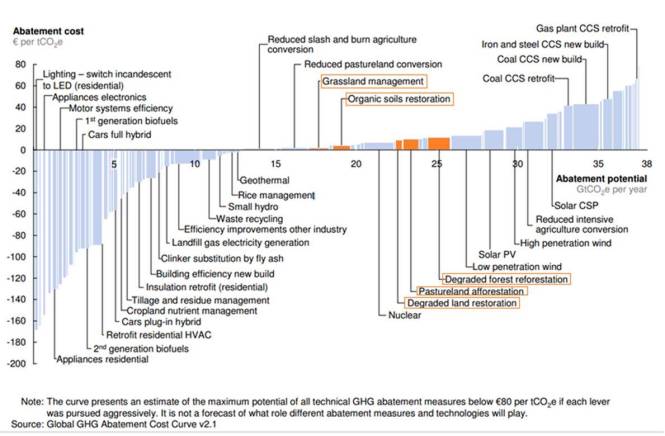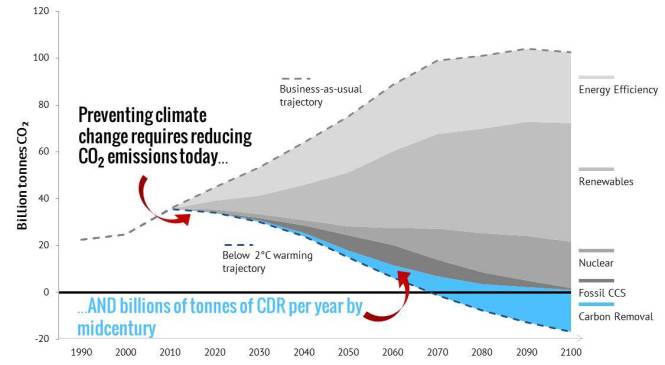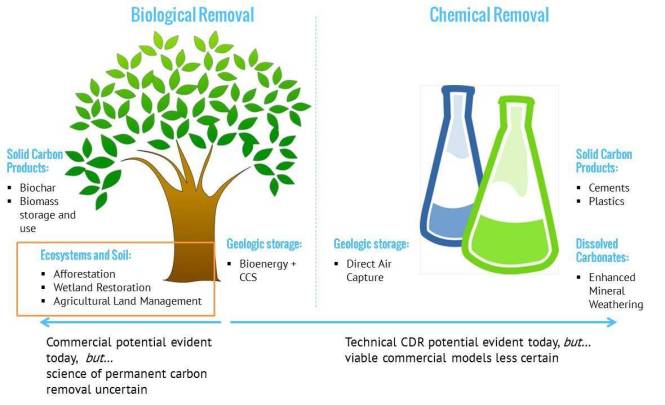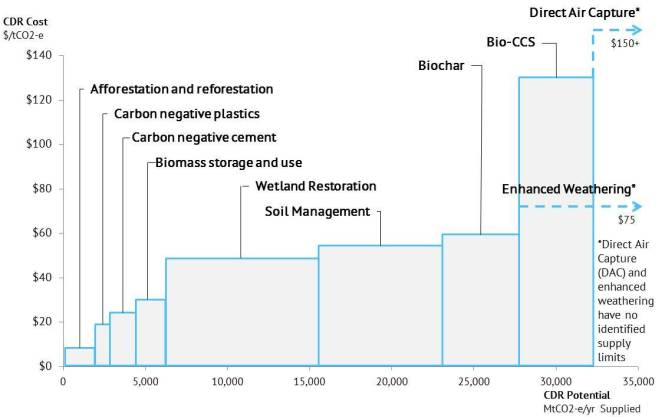The CDR field has begun to emerge out of relative obscurity recently as scientists have grown more confident that we will need to remove carbon from the atmosphere to prevent climate change. But CDR is not a new concept. In fact, there are a handful of CDR approaches that have been hiding in plain sight.
Take the following supply curve of GHG abatement options that the consultancy McKinsey has prepared.
The approaches highlighted in orange are all CDR techniques. So what does this chart tell us?
- CDR isn’t new.  McKinsey first produced this widely distributed chart in 2007. While CDR might not have been a concept that was widely known at the time, this chart shows that many CDR techniques were clearly on the radar of climate change analysts.
- CDR is relatively inexpensive. The handful of CDR abatement options considered here all are expected to cost less than 20 Euros / tCO2 by 2030 (note: this chart shows estimates for McKinsey’s expected cost/potential of different GHG abatement options in 2030 â€" not actual  costs/potential as they stand today).
- The supply of CDR techniques is potentially quite large. The techniques considered by McKinsey are able to provide around 5 tCO2 per year, which could provide a significant fraction of the likely demand for CDR, as shown in the chart below:Â
 Â Source: The Climate Institute
 Source: The Climate Institute - CDR is a complement to mitigation â€" not a competitor. Many worry that CDR will be used as an excuse to delay decarbonization of the economy. This chart shows that CDR isn’t a substitute for decarbonization, but instead part of the portfolio of solutions we can deploy to minimize the overall costs of decarbonization.
- Only a small fraction of the CDR approaches that have been proposed are expected to be “viable†by 2030 according to McKinsey. Many other CDR approaches besides the ones considered by McKinsey have been proposed, as shown below:
The McKinsey curve focused only on the orange box under the “biological removal†branch of proposed CDR approaches. I’ve constructed a supply curve of many of the prominent CDR options based off of data and estimates from the IPCC and the Virgin Earth Challenge, reproduced below:
Of note is that McKinsey only considered GHG abatement options that they expected would cost less than 80 Euros/tCO2 in 2030, whereas the full CDR supply curve includes a number of approaches well above that threshold. The cost estimates in the full CDR chart also are current estimates (not projections for 2030), and so are likely to come down in cost significantly by 2030 if significant R&D spending flows to these approaches.
6. McKinsey is bullish on the technical potential for “biological†carbon removal approaches. The science behind several of the proposed land management CDR approaches that McKinsey considers remains uncertain. The degree to which grassland management, for example, can sequester the amount of carbon McKinsey suggests still requires significant scientific analysis to confirm. It is certainly possible for McKinsey’s supply estimates to be validated, but first considerable investment in basic science behind some of the CDR approaches is required.

Authored by:
Noah Deich
Noah Deich is a professional in the carbon removal field with six years of clean energy and sustainability consulting experience. Noah currently works part-time as a consultant for the Virgin Earth Challenge, is pursuing his MBA from the Haas School of Business at UC Berkeley, and writes a blog dedicated to carbon removal (carbonremoval.wordpress.com). Prior to Haas, Noah spent three years ...


No comments:
Post a Comment